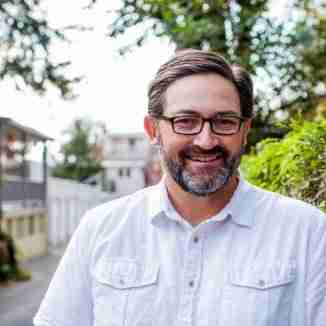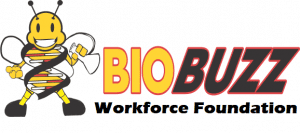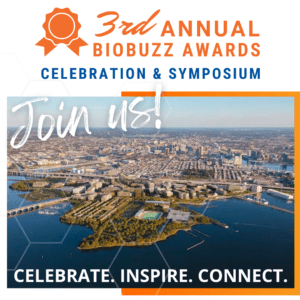
Connected DMV, a Driving Force Behind Montgomery County’s New Global Pandemic Prevention and Biodefense Center
Identifying gaps and bridging them—that’s what Connected DMV’s President and CEO Stu Solomon does best. And now he and his partners are turning their attention to one of the globe’s most important and challenging divides: Preparing for the next pandemic.
Solomon recently discussed his career and Connected DMV’s response to COVID-19 with Rich Bendis on his BioTalk podcast. Bendis is the President and CEO of BioHealth Innovation (BHI).

Solomon had an outstanding, three-decade career executing strategies and delivering results for consulting giant Accenture. As the head of the Washington, DC office for about two decades, Solomon was focused on large infrastructure projects and eventually grew the Accenture DC office from around 2,000 to 6,200 team members. After Solomon “failed miserably at retirement,” as he jokingly stated, he joined the non-profit world where he experienced the BioHealth Capital Region ecosystem’s tremendous networking prowess firsthand. He soon realized, however, that something was missing.
“One of the things that jumped out at me was that a lot of the association-organizations in greater Washington are fantastic conveners. They do great policy work, they do a really good job of helping people build their networks…But what jumped out at me is that the region as a whole really doesn’t have a mechanism by which they can actually deliver results. And having spent my entire career in delivery, that kind of jumped out at me. And so I knew that when it was appropriate to retire, that it would be good to invest some time in helping the region to think about delivery. How do we actually get things done?” stated Solomon.
“My time in the nonprofit world serving on boards really led me to look at that gap and say, ‘How do we help close that gap for the good of the region?’” he added. “That’s really how a lot of the region’s organizations work. They’ve each got their missions, and they’re doing them on their own. But nothing was connecting them. So at Connected DMV, we saw that opportunity to say, ‘Hey, well, if you had an MLB or an International Olympic Committee,’…we could really make it function at a higher level but still stay behind the scenes more or less.”
To close this delivery gap, Solomon and associates at the Department of Labor, the Washington Board of Trade, the Council of Governments, the Consortium of Universities Metro, and the Department of Defense, created the Smart Region movement, which eventually would become Connected DMV, a charitable 501(c)(3) organization that creates and delivers initiatives together with government, industry, academia, and community interests to the benefit of Washington D.C., Maryland, and Virginia residents and visitors.
Connected DMV, which launched officially as a response to the COVID-19 pandemic, is now a driving force behind creating the proposed new Global Pandemic Prevention and Biodefense Center (The Center).
Solomon stated that after COVID-19 hit, it was “…All hands on deck. We knew COVID was going to be the issue of the day for quite some time, so we became a fully independent 501(c)(3), and created Connected DMV as a standalone organization. We created a COVID-19 Strategic Renewal Task Force. We put that machinery in place. The five partners we had been working with came together with us, and we built out this Strategic Renewal Task Force.”
“Strategically, we looked at it and thought the local jurisdictions, the government, and many organizations were going to address the immediate issues around reopening. We knew that was going to be very consuming for the region at large and all the pieces that make it up, so we needed to focus our attention more on long-term strategic items. Our objective was to make sure that the region didn’t end up right back where it started and that we would come out at a different place when we eventually find our way out of this,” he added.
In a short period of time, the Strategic Renewal Task Force, a public-private partnership among federal, state, and local governments and industry, has grown to 51 members strong. Of these 51 members, 16 are CEOs from key organizations within the BHCR, including Bendis.
Bendis shared, “What’s very unique about the Task Force is a lot of the people who are leaders, doing what they do in the same region, had never met one another before. And one of the greatest goals and outcomes from this task force is connecting people together… and finding ways to leverage and partner with resources, organizations, and networks that had never connected like this before.”
The Strategic Renewal Task Force meets monthly to discuss important issues and strategies to resolve them. To date, the group has identified 12 critical strategic initiatives for the region. With the pandemic just a few months old when the Task Force formed, the group’s first initiative was improving regional resilience to natural or man-made emergencies.
Solomon noted, “There’s a lot of good emergency preparedness that goes on in the region, but a lot of it has happened in silos…Emergency preparedness might be state and local government-oriented, or within industry…or the feds might do something. But the region really didn’t have an integrated resilience capability here in the region. And so we set out to establish a set of ongoing exercises for resilience.”
An anchor of the Task Force’s new BHCR resilience plan is the creation of a new Global Pandemic Prevention and Biodefense Center.
“When we talked to some of the medical experts in the task force and others, what the scientific community and industry told us was we can actually get in front of pandemics now. You can actually prevent them. And for many good and valid reasons, a lot’s been left on the table in that space up until now. So when we looked at COVID-19 and public health, we asked an important question: ‘If you were to prevent a pandemic in the future, what would you need to do?’”, stated Solomon.
“One, you would certainly need the appropriate medical solutions, but you would also need the ecosystem to be working together,” he added. “The Pandemic Center initiative is as much about bringing that ecosystem together so that we can accelerate, we can go faster, and we can get better solutions. We also wanted to be initiatives-based, so this Pandemic Center is not just another center in the sense that it’s going to study, evaluate, and publish, but rather that it’s going to be a mechanism to help deliver strategic initiatives.”
The new Global Pandemic Prevention and Biodefense Center will be home to the AHEAD100 program. AHEAD100, which will be led by Dr. James Crowe Jr., Director, Vanderbilt Vaccine Center, Professor of Pediatrics and Pathology, Microbiology and Immunology, Ann Scott Carell Chair, is a research program focused on generating neutralizing antibodies for the 100 most likely causes of epidemics.
The program discovers and validates monoclonal antibodies, also known as mAbs, that can target infectious diseases that have the most potential to cause the next pandemic. Crowe, a world-renowned immunologist, and his team have spent the past decade preparing for the next global health epidemic. The Center will focus on bringing monoclonal antibodies for the top 100 possible epidemic causes through Phase I clinical trials, essentially creating a stockpile of Phase II-ready mAbs, which would significantly accelerate vaccine development and deployment during a public health emergency.
For Solomon and the Task Force, locating the Global Pandemic Prevention and Biodefense Center in the BHCR was an easy decision. With the National Institutes of Health (NIH), the Biomedical Advanced Research and Development Authority (BARDA), Health and Human Services (HHS), the Defense Advanced Research Projects Agency (DARPA), among others, and approximately 2,300 biotechs located in the region, the BHCR is a global epicenter of regulatory bodies, life science research, and vaccine development. Nearly 40% of Operation Warp Speed funding was deployed within the region.
“The task force was blown away just to see how rich the capability set was here,” shared Solomon.
The Task Force is in the midst of executing its six-month strategy to create The Center and fund the AHEAD100 program. Solomon and the Task Force are in the process of raising the $2M needed to complete the six-month plan; ultimately, The Center and AHEAD100 will need to raise about $2B in funding, which Solomon believes will come from a combination of government and philanthropic sources.
“When we looked at the loss of life and the economic harm from COVID-19, I mean, economically, we’re at $15 trillion globally? And to think about a $2 billion expenditure to get these monoclonal antibodies created, that’s not even a rounding error in what’s happened to the global economy,” stated Solomon.
Solomon and the Task Force know it will take the entire region’s collective effort and forces outside of the BHCR, including its world-class Steering Committee, to make the Global Pandemic Prevention and Biodefense Center a reality. But Solomon believes the BHCR is the right place at the right time to get this critical initiative moving forward.
“Think of the center as really driving the ecosystem and putting structure around the strategic program to make it happen. But the work is going to be done by the institutions, companies, organizations, governments that do their thing to build antibodies,” stated Solomon.
“We’ve had our eyes opened in diving into this to realize just how deep and rich the asset base is here in this space, in this region. Montgomery County and the broader region, like no place else in the world, can do this. We really want participation, we want the ecosystem to come together,” Solomon added.
Solomon added that any individuals or organizations interested in being involved with the creation of the Global Pandemic Prevention and Biodefense Center should contact him via ConnectedDMV.org or by email at [email protected].
- About the Author
- Latest Posts
Steve brings nearly twenty years of experience in marketing and content creation to the WorkForce Genetics team. He loves writing engaging content and working with partners, companies, and individuals to share their unique stories and showcase their work. Steve holds a BA in English from Providence College and an MA in American Literature from Montclair State University. He lives in Frederick, Maryland with his wife, two sons, and the family dog.





